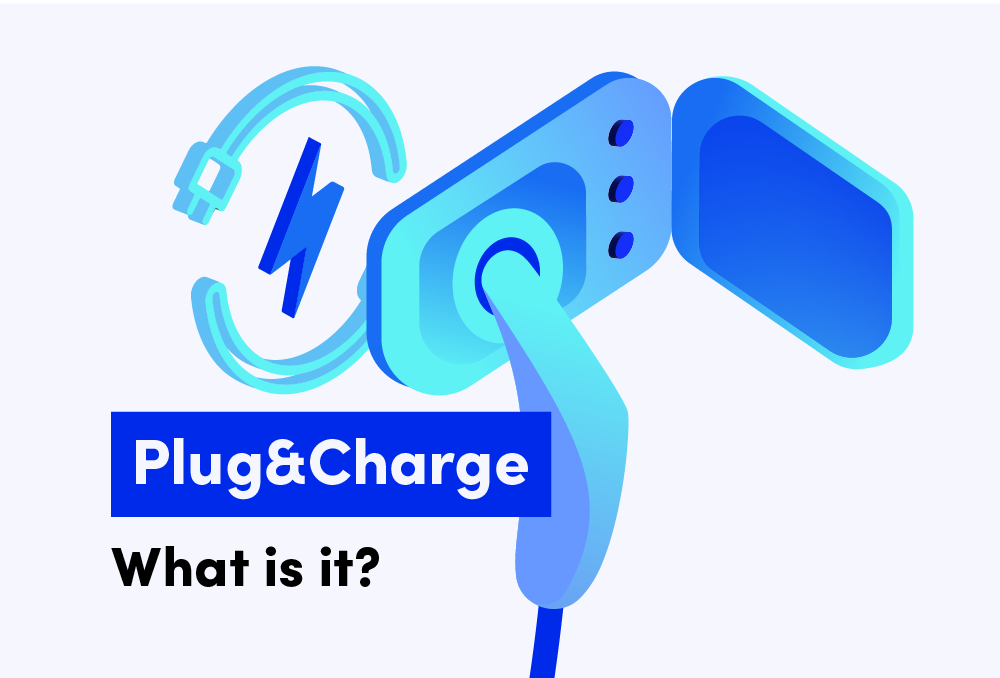No matter if you build charging infrastructure, run an eMobility platform, or manage a fleet, the biggest friction point is usually the charging process. Complexity, fragmented systems, and clunky user experiences frustrate drivers and can slow down growth.
That’s where Plug and Charge comes in.
This evolving standard makes charging electric vehicles as simple as plugging in and walking away. No apps. No RFID cards. Just a secure, automated exchange between the vehicle, the charger, and the backend systems.
In this article, we’ll break down what Plug and Charge really is, how ISO 15118 powers it, and what it means for operators, EMPs, CPOs, and developers building EV services that actually scale.
What is Plug and Charge?
Plug and Charge (also written as Plug & Charge) is a secure EV charging technology that lets drivers start a charging session simply by plugging in their vehicle without cards, apps, or manual authorization.
Everything happens automatically. The vehicle and the charging station recognize each other through a secure exchange of certificates. The system verifies the user, authenticates the charging contract, and initiates the session, all in a few seconds.
If you manage EV fleets, operate charge points, or offer mobility services, it’s a step forward in making the charging process easier, reducing support tickets, and delivering a frictionless experience at scale.
Plug and Charge is designed to:
- Simplify the charging session for drivers
- Secure user identification using digital certificates
- Automate billing through contract-linked credentials
- Improve data integrity between EVs, charge points, and platforms
It’s a smarter, faster way to handle the entire charging session, and it’s quickly becoming a standard across modern charging networks.
How Plug and Charge works
At a glance, Plug and Charge looks simple: you plug in the vehicle, and the charging starts automatically. But a lot is happening behind the scenes to make that seamless experience possible.
The whole process is built on the ISO 15118 standard, which handles secure communication between the EV and the charging station. Here's what happens during a typical Plug and Charge charging session:
- Vehicle connects to the charge point
As soon as the cable is plugged in, the car and charger start a secure data exchange. - Digital certificates are verified
The car holds a contract certificate tied to the driver’s charging provider (eMSP), and the station has its own EVSE certificate. These are used to verify identity and permissions without any manual action. - Session starts automatically
If the certificates check out, the charging process begins. The vehicle draws power, and the session is linked to the correct user for billing. - All communication is encrypted
From start to finish, the system protects the integrity of the data; there are no exposed credentials or third-party interference.
What makes this powerful is how it connects every part of the EV charging ecosystem: vehicles, charging networks, and backend platforms, without adding complexity for the user. Drivers don’t have to do anything beyond plugging in, and you can trust that authentication, session tracking, and billing are handled securely in the background.
The role of ISO 15118 in Plug and Charge
Plug and Charge relies on the ISO 15118 plug and charge standard, which enables secure, automated communication between electric vehicles and charging stations.
It lays the groundwork for encrypted data exchange, seamless driver authentication, and full interoperability across hardware and networks. ISO 15118 also supports broader use cases like V2G and smart charging, shaping much of what’s possible in modern EV infrastructure.
Contract certificates and data integrity
Plug and Charge is a secure identity system built around digital certificates.
Each vehicle stores a contract certificate issued by the driver’s eMobility Service Provider (eMSP). When the car connects to a charging station, the charger verifies this certificate against its own credentials, typically an EVSE certificate. If everything checks out, the charging session begins without the driver doing a thing.
This exchange is handled using Public Key Infrastructure (PKI), ensuring that:
- Only authorized users can start a session
- Billing is accurate and tied to the correct account
- All communication remains encrypted and tamper-proof
The result? Trust between the EV, the charge point, and the backend system without manual input or additional hardware.
For operators, this means fewer failed sessions and better data integrity across the entire charging process.
Open Plug and Charge Protocol (OPCP)
The Open Plug and Charge Protocol, introduced by Hubject, helps standardize how Plug and Charge is implemented across the industry.
By defining open interfaces for certificate exchange, OPCP improves interoperability between EVs, charge points, and service providers, making it easier to roll out Plug and Charge at scale.
It supports key features like multi-contract handling, role-based authentication, and compatibility with ISO 15118-20, all while reducing vendor lock-in.
Benefits of Plug and Charge
Plug and Charge helps solve real problems for EV businesses. Drivers don’t need to fumble with cards or apps, and backend systems don’t have to manage as many moving parts.
For charge point operators (CPOs): It reduces failed sessions, lowers support load, and makes billing more reliable, all without changing the physical setup.
For eMobility service providers (eMSPs): The user is automatically identified at the plug-in, which means fewer identification issues and smoother session tracking.
For fleets and corporate users: It simplifies charging by tying everything to the vehicle itself; no need to issue RFID tags or manage multiple accounts per driver.
In short, it cuts complexity for everyone involved, from the car to the backend platform.
Bring Plug and Charge into your EV operations
As more networks and vehicles adopt ISO 15118, Plug and Charge is quickly shifting from a nice-to-have to a baseline expectation. If you're building out charging infrastructure, managing roaming partnerships, or scaling an eMobility platform, now’s the time to start thinking about long-term compatibility.
Solidstudio’s platforms already support Plug and Charge capabilities built around secure certificate handling, session automation, and ISO 15118 compliance. If you're exploring how to integrate this into your setup or want to see how it works in practice, we're happy to show you around.
Book a quick demo to see how it all fits together in real environments.

